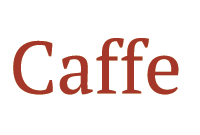With the availability of huge amount of data for research and powerfull machines to run your code on, Machine Learning and Neural Networks is gaining their foot again and impacting us more than ever in our everyday lives. With huge players like Google opensourcing part of their Machine Learning systems like the TensorFlow software library for numerical computation, there are many options for someone interested in starting off with Machine Learning/Neural Nets to choose from. Caffe, a deep learning framework developed by the Berkeley Vision and Learning Center (BVLC) and its contributors, comes to the play with a fresh cup of coffee.
The following section is divided in to two parts. Caffe's documentation suggest
